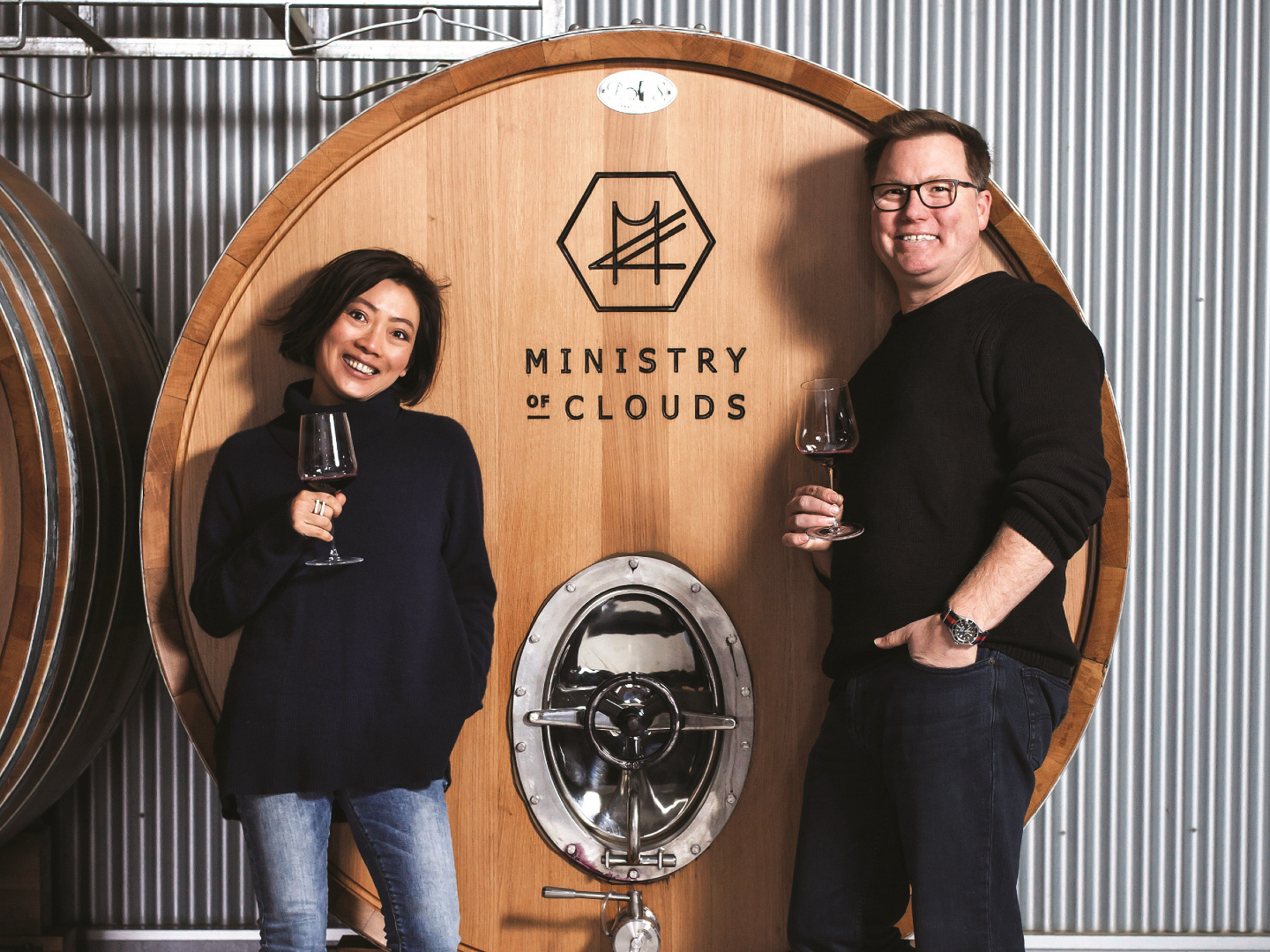
Ong (left) and Forwood (All photos: Ministry of Clouds)
"We both fell into wine over 20 years ago,” Bernice Ong states a little too matter-of-factly, considering that she is one half of the formidable duo behind cult winery Ministry of Clouds (MoC), which the Penang-born, South Australia-based dynamo runs with her husband, Julian Forwood.
Although the relatively young McLaren Vale-based label has yet to achieve the fame and household status that some other long-established South Australian wineries enjoy (Penfolds, Jacob’s Creek and Yalumba, all headquartered in the Barossa Valley, come to mind), MoC enjoys prime position on the global wine-drinking cognoscenti’s desirability list and was highly rated among eminent wine writer and critic James Halliday’s Top 10 Best New Wineries in 2015.
Those who pigeonhole South Australian wines, particularly its reds, as thermonuclear fruit bombs, or label the wine region as one whose main purpose is to pander to Robert Parker-style palates, should be prepared for a surprise with MoC, whose signature style is all about elegance and lightness — imagine a ballerina dancing en pointe versus a fiery flamenco or perhaps cool Grace Kelly vis à vis buxom Jayne Mansfield — and huge respect for terroir and provenance.
Born out of passion
Considering the couple did not possess Roseworthy credentials, let alone own a patch of vines when they started out, choosing instead to source fruit from Australian regions they loved, MoC is powered purely by sheer talent, passion and a razor-sharp instinct honed by time, experience and a lot of tastings. “We were initially working for importers of some of the world’s finest wine houses as well as representing some of Australia’s oldest and most established wineries,” says Ong.
“Over time, we wanted to be closer to the vineyards, to observe the changing of the seasons and partake in the creation of wines. So, we took on management roles for different wineries in McLaren Vale, with Julian looking after the commercial side of the business for Wirra Wirra while I looked after all of Woodstock Wines’ sales and marketing. Both provided fabulous opportunities for us to learn all the facets of a wine business. But after a relatively long stint, we realised that despite the illusion that we ‘had it all’, something was still missing.”
ministry_of_clouds_bottles.jpg
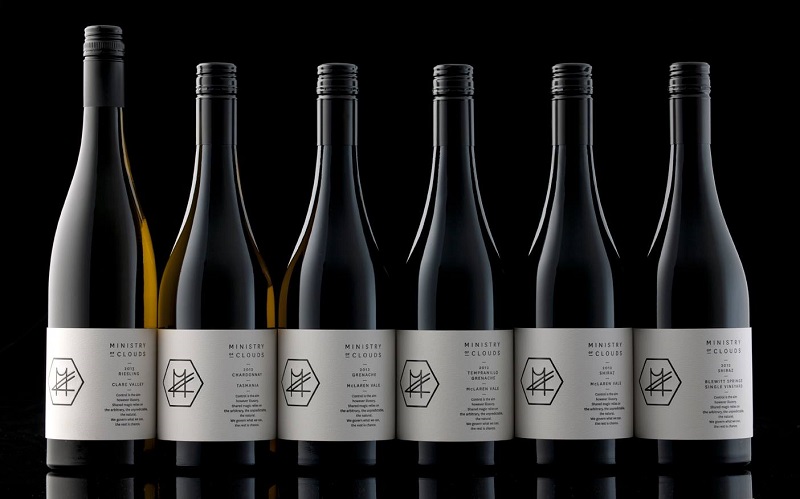
What felt lacking was the obvious fact the wines they promoted and sold were not in any way their own. “We knew that if we were to continue working in the wine space, we both needed to have a crack at making our own wines … to, at least, throw our voices into the Australian wine conversation,” Ong explains. And lend their voices they did — loud and eloquent enough to be heard, without having to raise it at all.
In the beginning
Having just completed their 10th vintage at MoC (their first being 2012), Ong shares how she and Forwood did not have the privilege of an oenological pedigree. “We don’t come from families with generational history in the wine world. What we had when we started MoC was just our palates — which had been very much shaped by our journey to date, some knowledge of wines and the wine business, and loads of ambition!
“We had set ourselves a couple of rules when we started MoC,” she continues. “One was that we would only work with varieties that we have consumed a truckload of, so that we know where we are heading. The other was that we would only work with grape varieties we were genuinely interested in. We would not make a wine just because it was on trend nor capitalise on it.”
With their raison d’etre firmly established, the couple revelled in the freedom to seek out distinguished vineyards suited to the varietals they loved, and in regions they felt were most conducive for their growth. This includes Mataro (or Mourvedre or Monastreil, if you will) from McLaren Vale, Chardonnay from Tasmania and Riesling from the Clare Valley. “We didn’t want to compromise. We continue to work with only the best.”
Terroir-ists
It should come as no surprise then that MoC wines have always been snapped up quickly. Also, it was only a matter of time that the winemakers would find vineyards of their own to love and nurture. In 2016, the opportunity arose to become custodians of a vineyard situated on one of the highest climes of the McLaren Vale region, sitting atop the Onkaparinga Gorge on the northern border of the Vale, with views looking out to the ocean and beyond. “On a good day, you can see Kangaroo Island,” says Forwood. “Funnily enough, this was a vineyard we had sought to purchase before we even started MoC. It took us close to four years to finally get across the line.”
mclaren_vale_taken_from_the_chase_vineyard_1.jpg
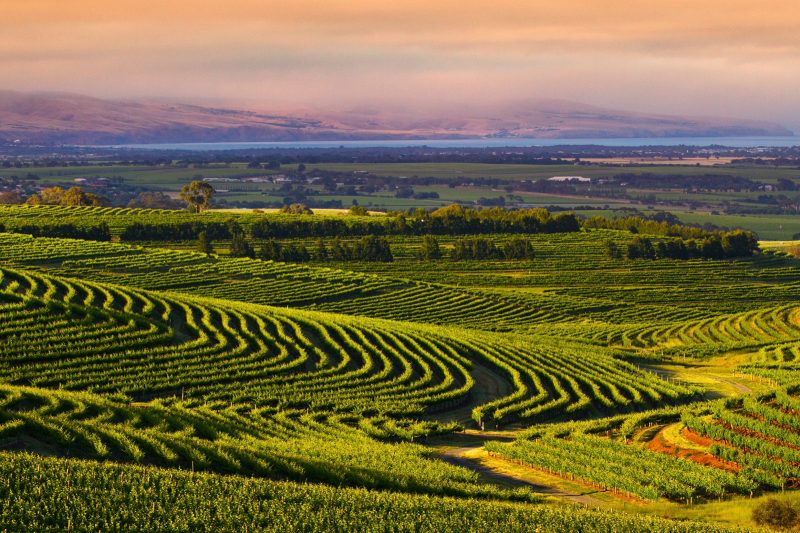
He describes some characteristics of the terroir of this elevated block, a rugged site with about a foot of topsoil and ancient rocks dating back more than 650 million years. “It is low-yielding, characterised by power, structure and minerality. What is amazing is that planting here allows us to continue exploring our own voice. The vineyard was originally planted with only Shiraz and Cabernet. Today, we have three clones of Tempranillo, Mencia, Picpoul, Cinsault and Carignan as well as the original Shiraz plantings.”
“Our home and heart is in the McLaren Vale,” Ong chips in. “Pretty much all of our reds are from the Vale. We love the region for its proximity to the coast. It is about 15 minutes to get to the Gulf of St Vincent and we love the moderating effects the sea has on our warm summers. Adelaide is only 40 minutes’ drive away, which means we have the best of both worlds.”
When it comes to whites, however, Clare Valley is the obvious choice for the duo, who happily describe themselves as “self-confessed acid freaks”. “We love Rieslings and Chardonnays — they are the two white varietals we drink the most of — so we have gone looking for regions better suited to them. We simply love the interplay between acid, lime and intensity of flavour. Clare Valley is classic Riesling country — the grape’s happy place — but we chose to cast our net a little further afield for Chardonnay. Much cooler temperatures equate to better acid retention and long daylight hours mean no shortage of flavour. We have always taken a bit of fruit from the Adelaide Hills, which adjoins McLaren Vale in the south, so watch this space.”
Grape expectations
On their unexpected foray into the world of wine, neither Ong nor Forwood can recall the exact moment Bacchus called them over. “We doubt there was a true epiphany but there was most definitely a point of no return,” Ong laughs. Said point occurred when a colleague dined with the couple and shared a suite of wines from the best producers in the world. Forwood recalls the evening animatedly. “Krug, Domaine Leflaive, Dujac, Domaine de la Romanée-Conti, Angelo Gaja … it was a heart-stopping experience. As he was leaving after dinner, he asked the fateful words: ‘Julian, do you want to come and work in the wine industry?’ Of course I said, ‘Yes!’ The rest, as they say, is history.”
j_and_b_on_ute_1.jpg
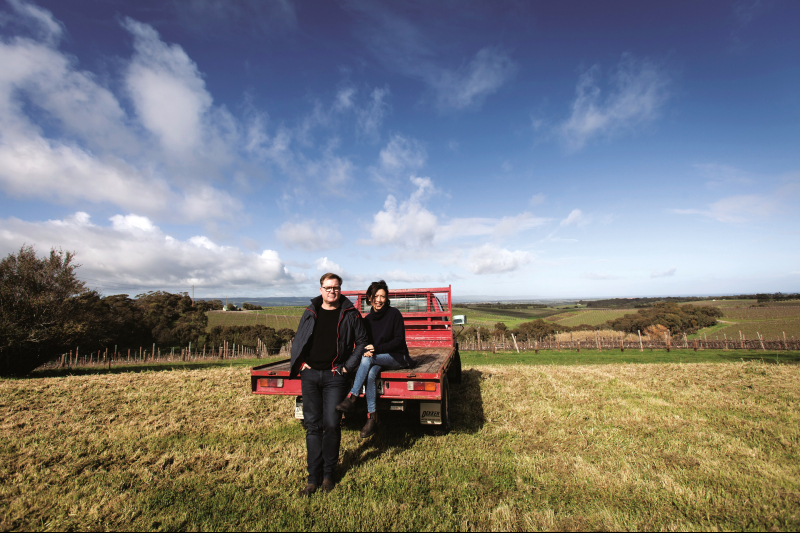
“Julian’s parents are farmers and artists,” says Ong. “His dad was also a lobbyist. Julian enrolled to do a law degree but never got to finishing it as he was lured into the hospitality industry by his love of food and wine, jumping at the opportunity to work with Cheong Liew [the Malaysian chef once honoured by American publication Food and Wine magazine as ‘one of the 10 hottest chefs alive’] at the Hilton Adelaide’s Grange Restaurant after finishing his diploma at the International College of Hotel Management.”
“I think we are the black sheep of our families though,” she muses, rather self-deprecatingly. “My parents hail from the medical industry. Dad was one of the founding partners of Island Medical Associates in Penang and there was some pressure to follow in their footsteps, but I never found my place in that world. Instead, I enrolled in and completed the broadest course ever — commerce — to appease them and also secretly thinking it would buy me time to work out what I really wanted to do. Now looking back and being cheeky, you could say wine is my chosen medicine.”
It takes two
Those lucky enough to have sampled MoC’s recently released Picpoul, an ancient, aromatic white grape planted through France’s Languedoc Roussillon would want to shake Forwood’s hand. “I am a little obsessed about it still,” he smiles. “We were among the first to work with this variety in Australia and it has a very distinct and most delicious maritime character, with [notes of] sea spray and an oyster shell minerality that could perhaps explain why it is such a traditional accompaniment to fresh oysters, bouillabaisse and the coastal cuisine shared between southern France and Australia.”
For a proud Penang lang, an island famed for its amazing and diverse cuisine and home to arguably some of the best street food on the planet, Ong is well aware of the power of beautifully matched food and wine. “Tempranillo Grenache is a wine that comes to mind when thinking about hawker food in Penang as it is a wine made with versatility in mind,” she says, slightly wistfully.
picpoul_all_picked.jpg
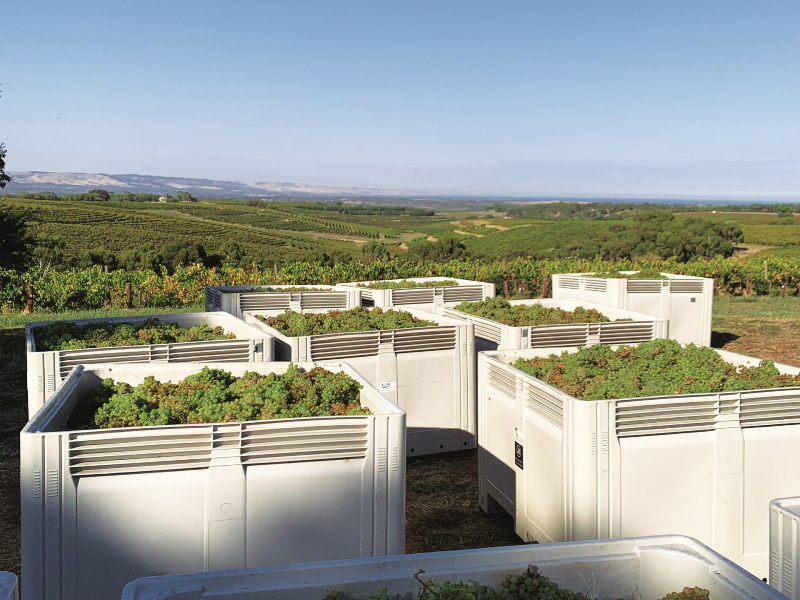
“We look for balance with this wine, between crunchy acidity and savoury tannin structure, brightness, fruit purity and some soul too. This wine has found its place in some of Australia’s finest restaurants as well as the neighbourhood Asian kitchen, where it can hold its own against spice and chilli. For me, sitting down to a plate of char kuey teow from Lorong Selamat with a glass of slightly chilled Tempranillo Grenache in hand would be the best thing ever! Covid-19 has got in the way of things and we still can’t travel … which is so frustrating!”
Forwood, too, shares his memories of the island. “One of my fondest memories of Penang was a visit to the Feringgi Grill at Shangri-La’s Rasa Sayang Resort & Spa, sitting in front of a hunk of King’s Cut Wagyu Prime Rib perfectly cooked on the bone. We hadn’t started MoC then but I reckon our single vineyard Blewitt Springs Shiraz paired with it would be the thing dreams are made of.”
Sharing another favourite haunt, Ong recalls family meals at the Sea Temple Lagoon in Tanjong Tokong. “It serves baked mud crabs and super tasty, salty prawns by the kilo,” she says animatedly. “We loved getting our fingers grubby. For me, a ripper match with a meal like that would be a nice chilled bottle of Riesling. I also vividly remember tagging along with mum to Pulau Tikus market and standing in front of a gentleman chopping up tasty siew yoke. We eat that often here in Australia. A wine with a bit of tannin like Mataro and siew yoke would be a match made in heaven!”
“Food will always be an important part of who we are,” says Forwood. “We both love eating and are open to exploring all kinds of food. Australia is a wonderfully diverse country with many cultural influences and it has become a much richer place to live in because of all these learnings from those who have arrived more recently to our shores. Part of that journey has been the move to more versatile, age-worthy and delicious mid-weight wines to accompany our amazing seafood and produce … and a deeply imbedded love of food from Southeast Asia. Lavishly oaked, high alcohol wines of brute force don’t, in our opinion, fit our climate, our culture or the way in which we live our lives or eat.”
What's in a name?
MoC’s Kintsugi is another gem worth hunting down. Inspired by and named for the ancient Japanese art of “golden joinery” or mending broken pottery pieces with gold — stemming from a philosophy that embraces flaws and imperfections to create a stronger, more beautiful piece of art — Kintsugi is a treasure in the MoC portfolio. Produced only in the most compelling vintages, there have been four vintages to date: 2015, 2016, 2018 and 2020.
“We are fascinated by the history and practice of kintsugi, where priceless porcelain is painstakingly rebuilt from broken fragments and pieced together with gold in order to ‘live’ again,” says Forwood. “Kintsugi is simply the best Southern Rhone-inspired wine we can make in a particular year, no matter its components.” However, based on the composition of the four vintages, Kintsugi has traditionally been Grenache-led (from MoC’s best old vine parcels), supported by Mataro, Shiraz, Cinsault and Carignan in varying degrees in different years. “The process of assembly, with each piece having only one correct place among the others and the blending of only our most distinct parcels, feels strangely fitting for this wine.”
“We are most definitely control freaks,” he chuckles. “So when it came to naming our project over 10 years ago, we wanted to express that unsettling but exhilarating tension between being in control and letting fate take its hand. Hence, the word ‘ministry’ is symbolic of our yearning for control, of safety, working for others, receiving a steady paycheque and sleeping well at night while ‘clouds’ speaks of the other side of the coin: of inherent risk, mortgaging our house to start this project and unavoidable agricultural uncertainty. As we say: We govern what we can, the rest is chance.”
Design enthusiasts would be charmed by the label’s design — clean, minimalist and featuring ancient, Rune-like typography. “The winery’s name led our designers to research the communication and iconography of clouds and their types,” Forwood explains. “They then found an amazing symbolic alphabet used by aviators with non-English-based symbols for each type of cloud. So, what looks like a logo made purely for MoC is, in fact, two particular cloud symbols overlaid; one depicts Altostratus, the other Altocumulus … both contained within the five-sided hexagon that is the crystalline makeup of all clouds.”
moc_riesling.jpg
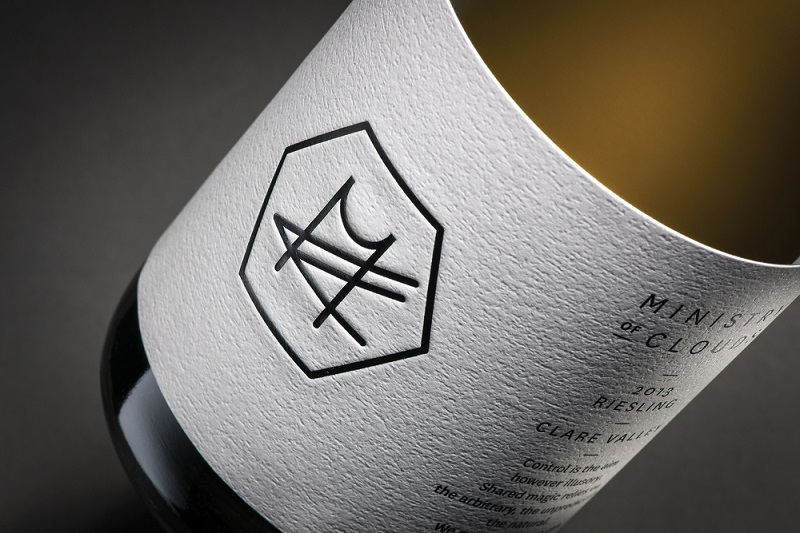
But beyond the clever philosophy, the melding of Eastern and Western styles and sensibilities and the interdependence between man and Nature, Ong reminds us that the ultimate goal is enjoyment over liquid communion and covenant between man and land. Beyond deriving pleasure merely from savouring fermented grape juice, it is, as author Jay McInerney once wrote, “a far more potent catalyst for contemplation than a highball, or an eight ball”.
“Follow your heart,” she advises. “Support the wines that speak to you and which you enjoy drinking. However, remain curious and continue to keep an open mind. Try wines from different producers, different varieties, different vintages and different regions. That is the wonderful thing about the wine world. After all, when Julian and I started out more than 20 years ago, Parker-style wines were the wines we consumed and enjoyed too. However, over time, our palates evolved. We came to the realisation that power comes in many shades and sizes. For us, it is not just about weight and intensity. We are looking for tannins, for fruit purity, for natural acidity, for length and for balance. Ultimately, what we are looking for is for the wines to represent the land in which they are grown, rather than an individual ideal of perfection to be scored.”
When asked whether MoC would ever consider making wine with fruit sourced from outside Australia, they reply firmly in the negative. Forwood explains, “If there is anything Covid-19 has taught us, the answer is ‘definitely not’! There was a time when we would have, might have, considered it. But to be honest, the next few years will be about consolidation and continuing to refine what we do while trying to have some balance in our lives.”
Ministry of Clouds’ wines are available in Malaysia via Milawa (M) Sdn Bhd. For more information or to purchase, visit milawa.com.
This article first appeared on Oct 18, 2021 in The Edge Malaysia.


